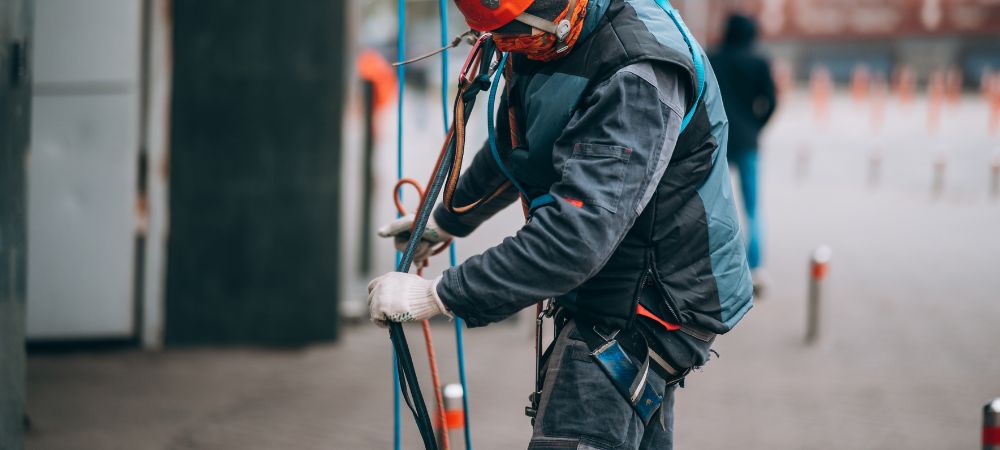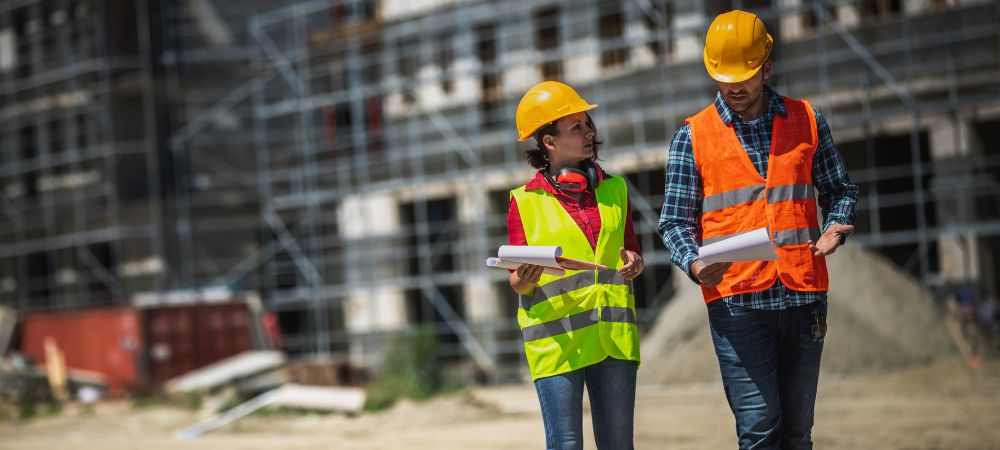Have you ever heard of the saying, not all heroes wear capes? When it comes to working at heights, roof anchor points are an indispensable safety tool, playing a pivotal role in the prevention of fall-related accidents in elevated workplaces. Roof anchor points are the unsung hero of roof safety; their significance is paramount in industries that operate at dizzying heights, effectively acting as a shield against potentially life-threatening situations.
In this comprehensive article, I aim to provide an in-depth exploration of roof anchor points – defining what they are, explaining their components, the legislation surrounding them, their role in safety management, and the potential future trends in roof safety.
Understanding Roof Anchor Points
Roof anchor points, often referred to as roof anchors, are secure points of attachment on the roof structure. These critical devices provide a secure tether for workers, enabling them to perform their tasks safely while minimising the risk of a fall. So, they do exactly what the name suggests, they anchor you to the roof, so there is no way you can fall.
Components of Roof Anchor Points
The primary components of a roof anchor point system encompass the anchor device itself, connecting subsystems such as lanyards or lifelines, and a body harness worn by the worker. Each component is meticulously engineered to offer maximum security and ease of use.
Common Types of Roof Anchor Points
Roof anchor points come in a variety of designs. Temporary anchors, reusable anchors, and permanent anchors are commonly used types. The selection often depends on the nature of the work, the frequency of tasks, and the type of roofing material and design. There are also fall arrest and fall restraint systems. Fall arrest anchor points stop you from hitting the floor, while fall restraint stops you from getting close enough to the edge to be in any danger.
The Science Behind Roof Anchor Points
Now we have a basic understanding of what a roof anchor point is, let us take a closer look at the science behind them and what features might just save your life.
The Principle of Fall Arrest
The primary function of fall arrest roof anchor points is to halt a fall or, in technical jargon, to facilitate a fall arrest. This process involves swiftly stopping the downward motion of a falling worker and minimising the force impact on the body. So a well-designed fall arrest anchor point doesn’t stop you brusquely; modern anchor points have an energy-absorbing feature which cushions the fall. This stops the user from being hurt but also minimises the damage to your roof.
Weight Distribution and Load-bearing Aspects
Roof anchor points must be capable of bearing the weight of a falling worker. This is achieved through the careful design of these devices, taking into account the weight distribution during a potential fall and ensuring they can withstand the peak force generated during a fall arrest.
The Role of Connectors and Lifelines
Connectors and lifelines serve as intermediaries between the worker and the anchor point. They play a crucial role in the effectiveness of roof anchor points, providing flexibility to the worker while ensuring safety remains uncompromised. They need to be strong enough to be able to hold the user but light enough not to impede his work. Otherwise, the possibility exists that workers might disconnect the lifeline to be able to work, putting them at risk.
The Legislation Around Roof Anchor Points
Safety standards and legislation, such as Safe Work Australia, regulate roof anchor points’ installation, certification and use. These bodies mandate compliance to ensure the safety and welfare of workers.
Importance of Regular Inspections
Routine inspections of roof anchor points are required by law to identify and rectify any potential deterioration or malfunctions that could compromise their functionality and safety. These inspections are of utmost importance; a roof anchor point in a bad state is more dangerous than no anchor point at all.

The Importance of Proper Installation
Multiple factors affect the installation of roof anchor points, such as roof material, slope, and structure. These considerations determine the type of roof anchor point required and the method of installation.
Professional vs DIY? While the DIY approach may appeal to your pocket, professional installation ensures compliance with safety regulations, adequate load-bearing capacity, and optimal placement for maximum protection.
Improper installation can lead to anchor point failure, potentially resulting in severe injury or even death. This emphasises the paramount importance of getting the installation right the first time. That’s why, at least in Australia, safety features like roof anchor points must be installed, certified and annually recertified by licenced professionals.
Roof Anchor Points in Different Industries
In the construction industry, roof anchor points provide essential safety for workers involved in tasks like roof installation, maintenance, and repairs at significant heights. But does that mean that once a building has been completed, anchor points are no longer needed? I suppose in a perfect world, yes, but we are yet to create anything that doesn’t need maintenance. So, anchor points are still needed for the repair and maintenance sector; roof anchor points facilitate safe working conditions for technicians who routinely work at heights, such as HVAC professionals, roofers and gutter cleaners.
Another common user of such safety devices are the emergency services, and rescue teams, who often utilise roof anchor points during rescue operations in high-rise structures, underscoring their importance beyond the construction and maintenance sectors.

The Role of Roof Anchor Points in Safety Management
Roof anchor points, along with other safety systems like ladder access systems, ladder brackets and access hatches, are all integral parts of safety management strategies, notably in the prevention of fall-related accidents. The correct use of roof anchor points significantly reduces the risk of injuries and fatalities.
The adoption and promotion of roof anchor points contribute significantly to a strong safety culture in the workplace, underscoring the organisation’s commitment to worker safety and well-being.
Safety Management can be narrowed down to a four-step process.
Step 1 – Identify
The first step involves identifying the risks associated with falls in the workplace. This requires a comprehensive examination of the physical work environment, the equipment, materials, and substances used, the work tasks and their execution, as well as the overall work design and management. Additionally, it is crucial to evaluate the effectiveness of existing control methods. This step entails conducting thorough inspections of the business premises and observing the environment and work processes to identify potential situations or processes that may put workers at risk.
Step 2 – Assess
The second step entails assessing each identified risk. This assessment involves evaluating the severity of the risk, determining the effectiveness of any existing control measures, deciding on appropriate actions to control the risk, and establishing the urgency of those actions. A risk assessment template can be employed to guide and document these assessments. While a single assessment may be applicable for areas with similar fall hazards, separate assessments are necessary for hazards that involve different or greater risks.
Step 3 – Control
To control the risks associated with falls, it is essential to follow the hierarchy of control. This involves selecting control measures based on their level of protection and reliability, from the highest to the lowest. The hierarchy includes measures such as risk elimination, where working at heights should be avoided if reasonably practicable, and focusing on ground-level work. Additionally, working on solid constructions that feature appropriate surfaces, gradients, and barriers can help prevent falls. Implementing a safe system of work, which may involve fall prevention devices, work positioning systems, or fall-arrest systems, is crucial when risk elimination is not feasible.
Step 4 – Review
The final step necessitates the regular review of control measures to ensure their ongoing suitability and effectiveness. Reviews are particularly important in cases where incidents occur, changes in the workplace introduce new risks, new hazards are identified, or consultations and requests from health and safety representatives indicate the need for review.
Future Trends in Roof Safety
Numerous case studies highlight the effectiveness of roof anchor points in preventing accidents. These success stories underscore the profound difference roof anchor points can make in ensuring worker safety. But regrettably, accidents do occur, but they offer valuable lessons. Analysing these incidents helps to continuously improve the design, installation, and usage of roof anchor points. It also shows the importance of regulation from bodies like Work Health and Safety and Work Safe Australia.
Accidents also show the need for technological innovations in roof anchor points. With technological advancements, roof anchor points are becoming increasingly sophisticated. Innovations like smart safety systems and IoT integrations are set to revolutionise roof safety measures.
Sustainable and eco-friendly solutions are a trend we are seeing in many sectors, and it seems like it’s also a future for safety systems. There’s a growing demand for eco-friendly roof anchor points that can provide uncompromised safety without harming the environment.
Conclusion
Roof anchor points are an integral part of high-altitude workplace safety. From their design and installation to their role in different industries and safety management, they offer an indispensable layer of protection for workers.
Emphasising the significance of roof anchor points, the call to action is clear – prioritise safety. Ensure the use of high-quality roof anchor points, proper installation, and routine inspections to safeguard lives and enhance productivity.

